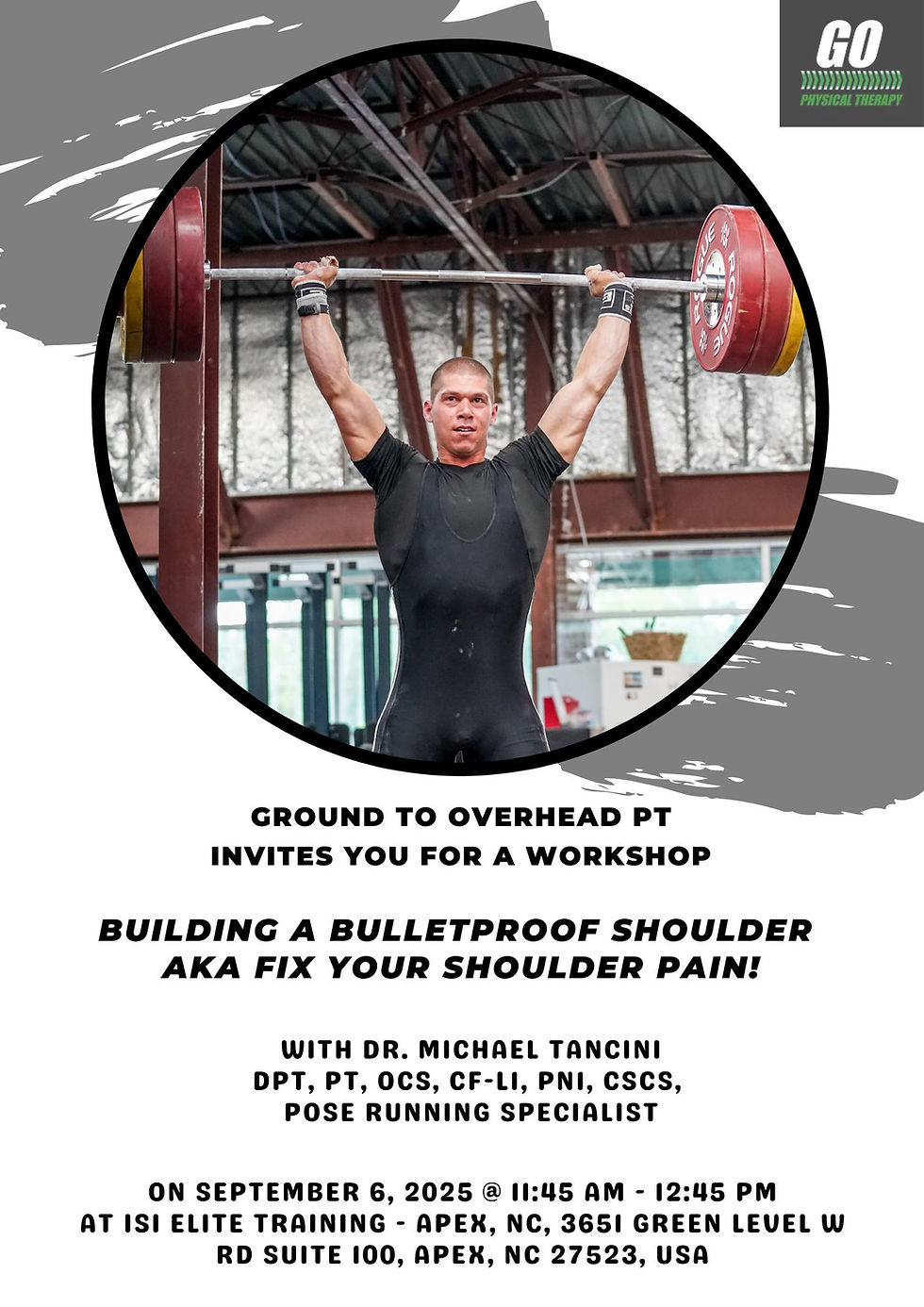Are You Really Ready to Return to Sport?
- Dr. Michael Tancini
- Mar 20
- 3 min read

Are You Really Ready to Return to Sport?
Following an injury, the body needs to be allowed sufficient time to heal prior to returning to an individual’s prior level of activity. This time allows for damaged tissues to be repaired and remodeled sufficiently to withstand the forces that are placed upon it. Ideally, this consists of a rehabilitation plan that addresses symptoms earlier on during the treatment plan and progressively loads the tissues to return to strengthen them further. In the case of athletes during competition, the forces placed on tissues can be substantially greater compared to those that would normally be experienced during daily life. Therefore, it is vitally important that athletes are sufficiently prepared to return to competition.
Physical indicators of readiness to return to sport
There are numerous physical tests that can be used to assess an athlete’s readiness to return to competition. In addition, there are also thresholds that can be used to suggest when an athlete can return to practice and if any modifications may be needed. One of the best methods to assess physical readiness to return to any level of activity consists of test batteries. These consist of a series of assessments that can be scored based on norms or the athlete’s baseline values. In the case of an injury to one extremity, the “norm” or baseline can be determined by comparing the injured side to the athlete’s uninjured limb. Many tests have been researched rigorously to establish their reliability and accuracy. Ideally, the tests included in a battery relate to the activities the athlete would perform. For example, runners should likely be assessed using tests that include exercises like running, jumping, or other movements that can measure lower body strength and power. In general, it is recommended that an athlete produce strength and power scores with their injured limb that are at least 90-95% of their scores on their uninjured side prior to returning to competition.1 This threshold is recommended in order to reduce the risk of injury. However, scores on an individual’s injured side that are 70-80% of the uninjured side are typically considered sufficient to begin practicing as it is easier to restrict certain intensities or movements in a practice setting.1 The same can be said for performance on balance and range of motion testing. In addition, it is important to consider the athlete’s performance subjectively. An individual may score well but demonstrate much worse technique on their injured side compared to their uninjured side. These issues with movement suggest that the athlete may not quite have returned to their baseline. By assessing both objective and subjective performance on tests that are applicable to the demands an individual will face, it is much easier to determine their readiness to return to sport and make more accurate recommendations.
Mental indicators of readiness to return to sport
An often overlooked aspect of an athlete’s return to play protocol is their mental state. However, research has found that individuals who score poorly on assessments that grade psychological readiness were more likely to get injured upon returning to sport and competition.2 Therefore, it is important to include such assessments. One example of such a tool following an ACL injury is the Anterior Cruciate Ligament-Return to Sport after Injury (ACL-RSI) scale.2 Though the exact reason is unknown, it is believed that this connection between psychological preparedness and risk of injury is the result of individuals changing their movement patterns or favoring their uninjured side to compensate for a lack of confidence in their ability to perform without reinjuring themselves. Therefore, it is important to assess psychological readiness in order to minimize the risk of future injury.
Conclusion
When making a determination regarding readiness to return to sport for yourself or one of your athletes, it is important to consider both physical and psychological factors. Training, rehabilitation, and assessments should relate to the athlete’s sport and should be structured to prepare the athlete for those demands so that they can perform to the best of their ability and minimize risk of injury.
References:
1. Draovitch P, Patel S, Marrone W, Grundstein MJ, Grant R, Virgile A, Myslinski T, Bedi A, Bradley JP, Williams RJ 3rd, Kelly B, Jones K. The Return-to-Sport Clearance Continuum Is a Novel Approach Toward Return to Sport and Performance for the Professional Athlete. Arthrosc Sports Med Rehabil. 2022 Jan 28;4(1):e93-e101. doi: 10.1016/j.asmr.2021.10.026. PMID: 35141541.
2. Faleide AGH, Magnussen LH, Strand T, Bogen BE, Moe-Nilssen R, Mo IF, Vervaat W, Inderhaug E. The Role of Psychological Readiness in Return to Sport Assessment After Anterior Cruciate Ligament Reconstruction. Am J Sports Med. 2021 Apr;49(5):1236-1243. doi: 10.1177/0363546521991924. Epub 2021 Mar 3. PMID: 33656938.



Comments